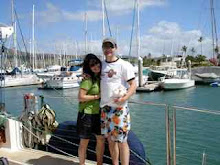The Yapese automobile, while neither rare nor dwindling in numbers, nonetheless belongs to a family all its own. The American driver, accustomed to his giant, Bluetooth-enabled suburban assault vehicle, equipped with amenities such as windows and seatbelts, may find himself at a loss when entering the wilds of the Yapese autobahn. It is for this reason that we offer this survival guide, intended to ease the transition of American visitors to the western Pacific.

Chapter 1: Road Conditions
Before visiting Yap, the American driver may wish to visit his local bombing range, preferably when exercises are taking place, in order to improve his reflexive steering ability. Sky-borne projectiles are a rarity in Yap, but with coconut palms aplenty, they are certainly not an impossibility. Craters are much more common. While the damage created by typical aircraft-borne ordnance pales in comparison to the average Yapese pothole, the thrill of participating in live-fire exercises is a fair substitute for driving certain sections of road, where a single misjudged turn may result in either a plunge into Davy Jones’ locker or shredded tires and automobile suspensions.


Chapter 2: Driving Techniques
Several points concerning technique should be considered by the aspiring Yapese driver. First, although the island-wide speed limit is 25 mph, to be caught going within 10 miles per hour of that speed will immediately mark one as an outsider. Thus, either 15 or 45 mph is perfectly acceptable. If you choose the lower end of the scale, you must ensure that you do so on blind corners, and where passing is permitted make sure that your speed and direction is variable enough to prevent approaching drivers from passing. If you opt for 45 mph and up, please ensure that you are prepared to explain that, because your speedometer is marked solely in kilometers per hour, you had no idea of your true speed.

Remember also: despite the fact that steering wheels are typically on the right, Yapese driving is nonetheless on the right side of the road. Sitting on the right side of the car has several distinct advantages. For example, when you open the car door to spit betelnut juice, you are less likely to hit oncoming traffic, although pedestrians are put at more risk. And speaking of pedestrians, remember that they do not have the right of way under any circumstances. One good way to remind them of this is by driving straight at them until they yelp and move out of the way. If you lack the gumption to play chicken with actual humans you can always practice with dogs, although the yelp often comes later under those circumstances.
Chapter 3: Safety
Whatever.




Chapter 4: Navigation
Yap’s roads are unnamed. This has the tendency to make navigation difficult, and providing or following directions next to impossible. To get to our house from Colonia, for example, you would drive around the Blue Lagoon and then up the big hill near the apartments. After the surface changes to dirt, keep an eye out for the road merging from the right. Turn right on that road, and then when you spot 3 large mango trees, turn into our driveway. Be sure to remember that any children who happen to be in the yard picking mangoes do not have the right of way.

To be continued…










No comments:
Post a Comment